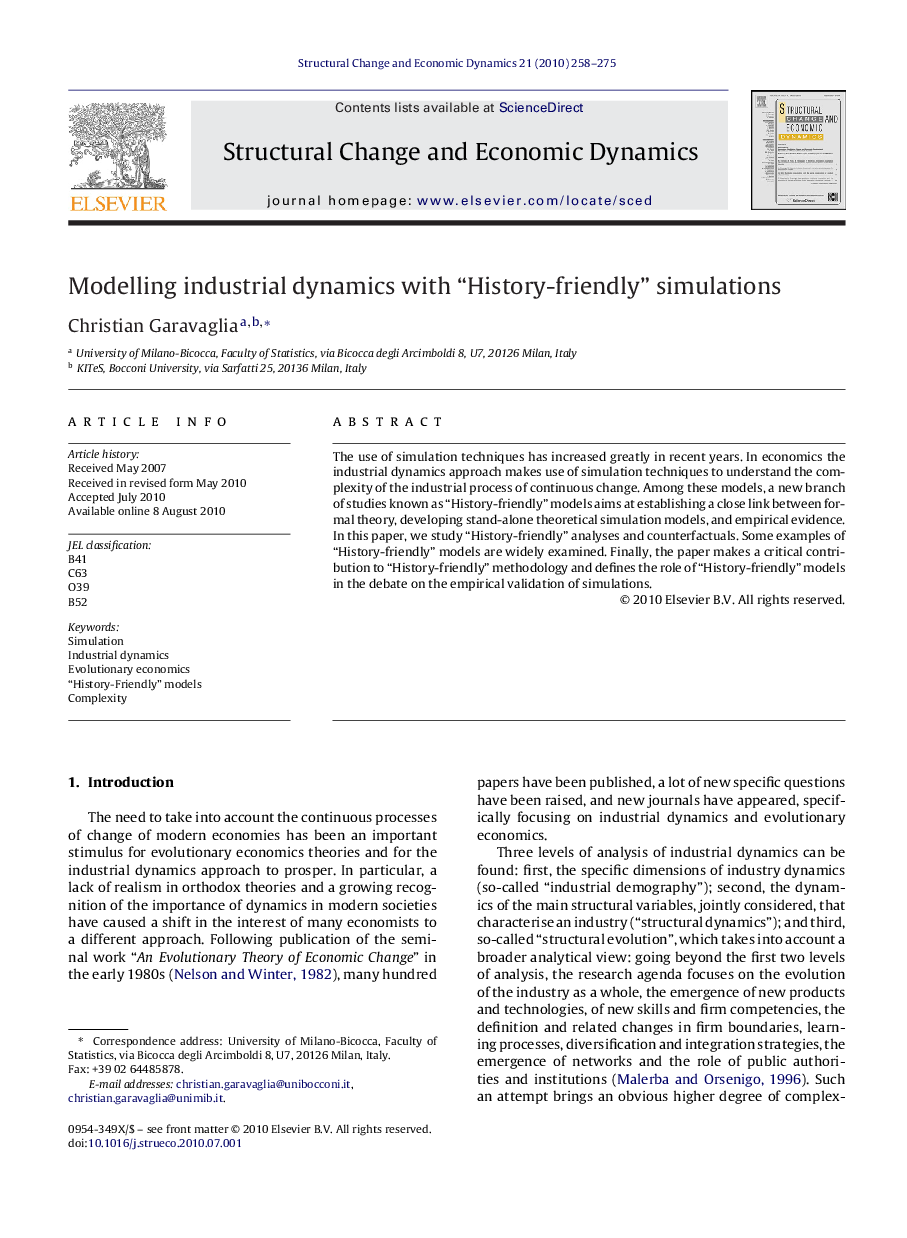| Article ID | Journal | Published Year | Pages | File Type |
|---|---|---|---|---|
| 988657 | Structural Change and Economic Dynamics | 2010 | 18 Pages |
The use of simulation techniques has increased greatly in recent years. In economics the industrial dynamics approach makes use of simulation techniques to understand the complexity of the industrial process of continuous change. Among these models, a new branch of studies known as “History-friendly” models aims at establishing a close link between formal theory, developing stand-alone theoretical simulation models, and empirical evidence. In this paper, we study “History-friendly” analyses and counterfactuals. Some examples of “History-friendly” models are widely examined. Finally, the paper makes a critical contribution to “History-friendly” methodology and defines the role of “History-friendly” models in the debate on the empirical validation of simulations.
Research highlights▶ “History-friendly” models (HFMs) construct a consistent and logically coherent framework that explores complex systems. ▶ HFMs resemble in a stylised and formal way the evolution of an industry. ▶ HFMs are industry-specific and history-based. ▶ Counterfactual thinking in HFMs discusses how some patterns might have evolved differently as a result of other plausible causal explanations.
